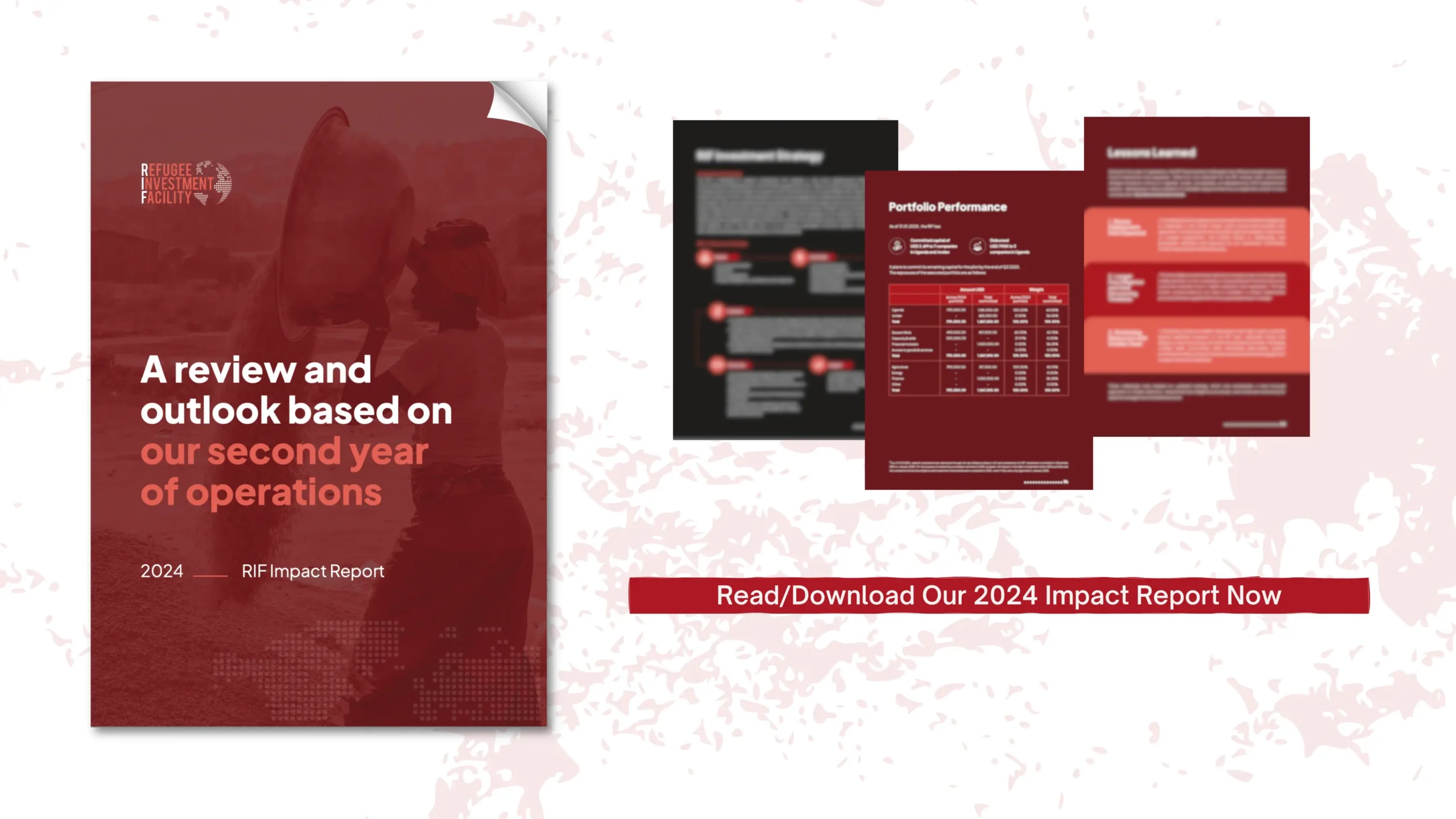Refugee Investment Facility (RIF): 2024 Impact Report

Refugee Investment Facility (RIF) 2024 Impact Report: Real Numbers, Real Change.
Read the full interactive report now!
Both businesses and financial communities have long overlooked refugees – not for lack of potential, but due to structural barriers that keep displaced communities at the margins of investment. The Refugee Investment Facility (RIF) ,co-founded and managed by iGravity and the Danish Refugee Council , was built to change that narrative, proving that refugees and their host communities are not just recipients of aid but economic actors capable of driving meaningful change when given access to capital, skills and employment opportunities.
As we proudly release our 2024 Impact Report, we take stock of how far RIF has come, from its initial pilots in Jordan and Uganda to an expanding ecosystem of refugee-lens investing that is mobilizing private capital, strengthening high-impact enterprises, and pioneering innovative finance models in fragile markets.
The past year has been pivotal for RIF. The facility successfully mobilized over USD 8 million for its pilot phase, with USD 4 million already allocated to lending to 10 local companies.
Recognizing the pressing need for scalable solutions, RIF expanded its geographic focus beyond Jordan and Uganda, initiating exploratory investments in Kenya – a country with large displacement-affected populations and significant untapped entrepreneurial potential.
But financing alone isn’t enough. The RIF has also significantly strengthened its technical assistance model, equipping enterprises with crucial refugee impact advisory and business development support to ensure they can scale sustainably while maximizing their social impact.
The Numbers Speak: RIF Investees Impact in 2024
The impact of refugee-lens investing isn’t theoretical, it’s powerfully measurable. In 2024, RIF-backed enterprises directly improved the lives of thousands in displacement-affected areas:
- 9,896 people gained access to essential goods and services from RIF Investees, directly improving daily livelihoods.
- 12,853 individuals received skills training from RIF Investees, equipping them for employment and entrepreneurship.
- 565 decent jobs were supported by RIF Investees, reinforcing that investment leads to tangible employment opportunities.
- USD 413,167 in financial flows reached refugees and host communities from RIF investees, demonstrating how capital can directly improve economic resilience.
Case Study of Omia Agribusiness
One of the facility’s most compelling examples is Omia Agribusiness, a Ugandan company that previously focused on serving smallholder farmers, but had never directly targeted refugee populations. With impact-linked financing from RIF, Omia transformed its approach, integrating refugees into its customer base and operations.
The results were striking. Within one year:
- Revenue nearly doubled, proving that refugee-inclusive business models are financially viable.
- Net income grew 13x, strengthening Omia’s ability to scale operations.
- Refugees now make up 47% of their 2,666 customers in refugee-hosting areas.
- 985 refugees received agronomic training, equipping them with skills for self-sufficient farming.
- Loan interest rate reduced by 2% every year, rewarding Omia for successfully meeting refugee inclusion KPIs.
This case exemplifies how impact-linked financing, combined with technical support, enables businesses to not only grow but embed refugee inclusion into their DNA, powerfully proving that financial sustainability and deep social impact can truly go hand in hand.
Looking Ahead: Scaling Refugee-Lens Investing with RIF 2.0
As RIF moves confidently into its next phase, RIF 2.0, we are setting our sights on expanding investments across multiple geographies, attracting greater private sector participation, and refining our financing models to catalyze systemic change in fragile economies. The RIF 2.0 aims to make over 30 new investments and achieve a 3-4x increase in its investment portfolio and impact ambitions between 2026-2030, increasing its Assets Under Management (AUM) to USD 25M.
The 2024 Impact Report is more than an account of milestones. It’s a testament to what’s possible when capital is deployed intentionally, strategically, and with an unwavering commitment to resilience.

